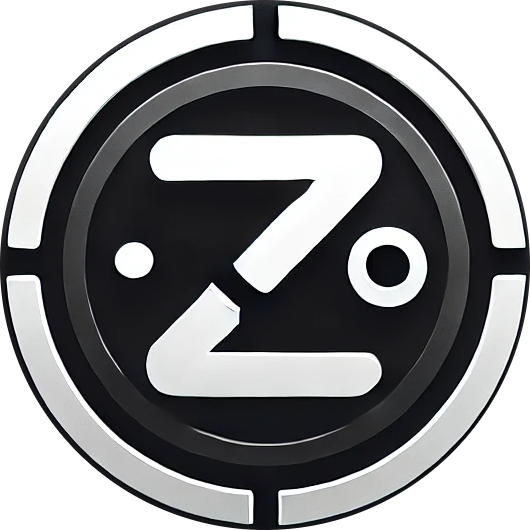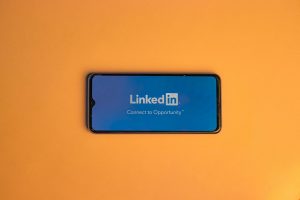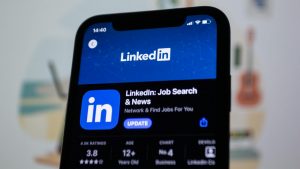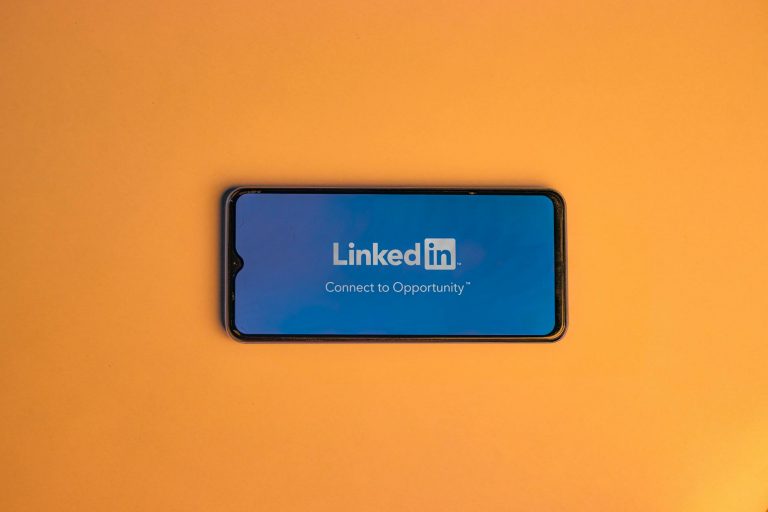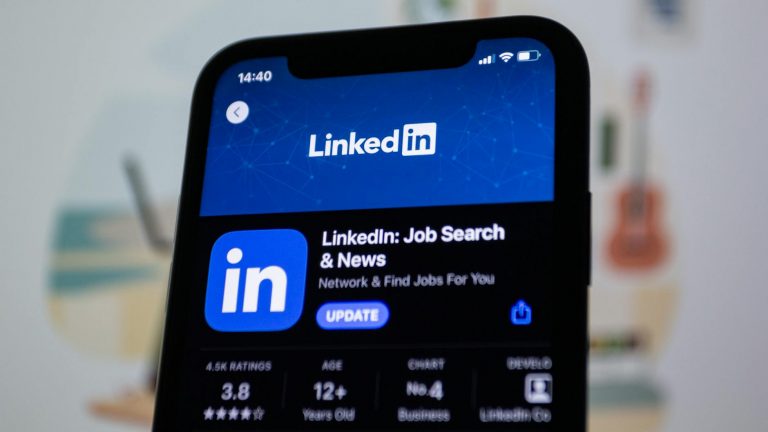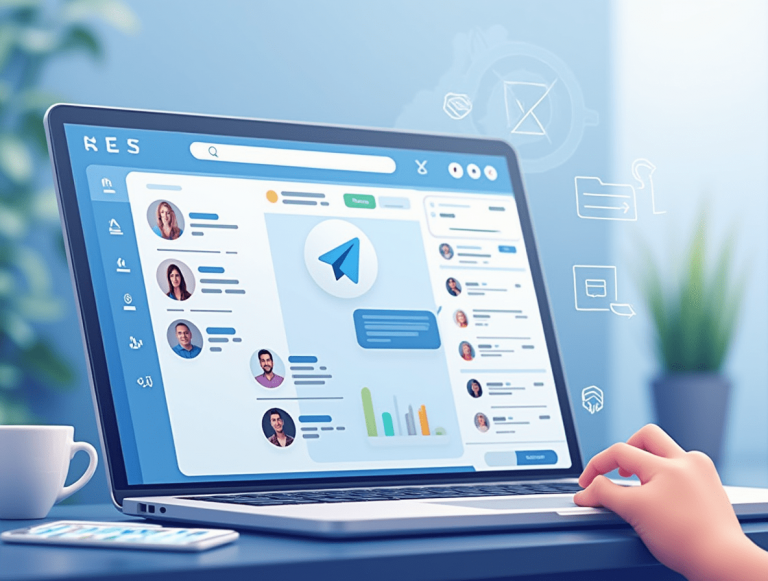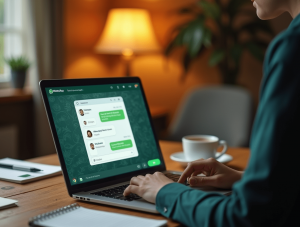
I’d spent weeks preparing this brilliant presentation about content marketing, invited my entire email list, and when the big day came… my internet cut out 15 minutes in. Just me, talking to a black screen, completely oblivious that nobody could hear me anymore.
Yeah, not my finest moment.
But here’s the thing—that disaster taught me more about webinars than any course ever could. Since then, I’ve hosted over 200 webinars, generated six figures in revenue from them, and helped dozens of clients do the same.
And honestly? Zoom makes the whole process way less painful than it used to be.
Why I Swear by Zoom (Even Though It’s Not Perfect)
Look, every platform has its quirks. Google Meet feels like it was built for quick team check-ins, not serious presentations. Teams is… well, it’s Teams. GoToWebinar costs a fortune and feels like it hasn’t been updated since 2015.
Zoom just gets it right more often than not. When I’m hosting 500 people and someone asks a question in the chat, I can actually find it without scrolling through a million messages. The polls work without glitching out. Screen sharing doesn’t turn my slides into a pixelated mess.
Plus—and this matters if you’re building a business—it integrates with pretty much everything. My CRM, email platform, payment processor… they all play nice with Zoom. Less time wrestling with technology means more time focusing on delivering value.
The recent updates have been solid too. Nothing revolutionary, but they’ve clearly been listening to feedback from people who actually host these things regularly.
First Things First: Your Account Setup
Here’s where people get tripped up right away. That free Zoom account you use for coffee chats with friends? Won’t work. You need the Pro plan at minimum, plus the Webinars add-on.
I know, I know. More monthly expenses when you’re just testing the waters. But think about it this way—if one person becomes a client because of your webinar, you’ve already covered the cost for months.
There’s also this newer Sessions bundle that combines webinars with large meetings. Honestly haven’t tried it yet, but might be worth exploring if you want flexibility in your format.
Setting Everything Up (The Right Way)
Scheduling a webinar in Zoom is pretty straightforward, but there are a few settings that’ll save your sanity later.
When you’re filling out the details, don’t skip the description. People actually read it, and a clear explanation of what they’ll learn makes a huge difference in attendance rates. I learned this the hard way when only 30% of my registrants showed up to a vaguely titled “Marketing Tips” session.
The automatic reminders? Turn them on. People have good intentions when they register, but life happens. I send reminders a week out, the day before, and an hour before we start. My attendance rates jumped from 45% to 75% just by doing this consistently.
Making It Look Professional (Without Being a Designer)
I used to think branding was just for big companies with design budgets. Then I saw the difference it made.
Your registration page is often the first real impression people get of you. A crappy-looking signup form makes you look… well, crappy. But throw your logo up there, use colors that match your website, maybe add a decent headshot—suddenly you look like you know what you’re doing.
Canva saves my life here. Their webinar templates are actually pretty good, and you can customize everything without needing a design degree. Takes maybe 20 minutes to set up, but the credibility boost is worth way more than the time investment.
Getting Butts in Virtual Seats
Promoting webinars is weird because you’re asking people for something precious: their time. Not their money, not their email address—their actual time on a specific day. That’s a bigger ask than most people realize.
I start promoting 2 weeks out, max. Any earlier and people forget. Any later and they’re already booked up. LinkedIn has been my best channel for B2B topics—their Events feature actually works pretty well, and the professional crowd there seems more willing to block out time for learning.
Don’t underestimate email, though. Your existing audience already knows and trusts you. They’re your warmest leads. I usually see 3-5x higher registration rates from my email list compared to social media.
One trick that’s worked well: partner with someone in a complementary niche. They promote to their audience, you promote to yours. Just make sure your partner actually has an engaged audience—vanity metrics don’t translate to webinar attendance.
Go Time: Not Screwing It Up When It Matters
The hour before your webinar is crucial. I have a little ritual now—log in 45 minutes early, test everything twice, maybe do some weird vocal warm-ups that my neighbors probably think are concerning.
Zoom’s Practice Mode is clutch here. You can run through your slides, test screen sharing, maybe rehearse that transition you’ve been worried about. When you’re ready, flip the switch and go live.
During the actual presentation, remember you’re talking to real humans, not a camera lens. Use names when people ask questions. Share quick personal stories. If something goes slightly wrong (and something always goes slightly wrong), acknowledge it with humor instead of pretending it didn’t happen.
I always have someone else monitoring the chat and technical stuff while I present. Trying to do everything yourself is a recipe for distraction and missed opportunities.
The Follow-Up Game (Where Money Gets Made)
This is where most people completely drop the ball. They deliver solid content, everyone says thanks, and then… crickets.
Your follow-up email should go out within 24 hours. Thank people for their time, share the replay link, and most importantly—tell them what to do next. Book a call? Download a resource? Check out your course? Don’t make them guess.
I also spend time in Zoom’s analytics afterward. Who stayed until the end? Who was asking questions? Who clicked links during the presentation? These are your hottest leads, and they deserve personalized follow-up.
The replay has a longer shelf life than you might think. I’ve had people watch recordings months later and still convert. Don’t let that content die after one live session.
A Real Example (Because Stories Work)
My client Sarah runs a bookkeeping firm in Austin. She was struggling to move beyond one-off clients and wanted to create a course for small business owners.
Her first webinar was rough—maybe 40 people showed up, her slides were boring, and she talked way too fast because she was nervous. But she kept at it. Refined her topic, improved her slides, got comfortable with the format.
By webinar number six, she had her groove. Same 45-minute format every time: 30 minutes of teaching, 15 minutes of Q&A, then a soft pitch for her course. Nothing fancy, just consistent value delivery.
Over eight months, those webinars generated 400+ leads and $180K in course sales. Not overnight success—steady, methodical growth from showing up consistently and getting better each time.
Mistakes That’ll Kill Your Webinar
I’ve made most of these mistakes at least once:
Forgetting to record. Seriously, check this setting every single time. I once delivered my best presentation ever to 300 people and forgot to record it. Still haunts me.
Death by PowerPoint. Your slides should enhance what you’re saying, not replace your personality. If you’re just reading bullet points, people will tune out faster than you can say “synergy.”
Zero interaction. Polls, questions, chat responses—use them. A 45-minute monologue isn’t a webinar, it’s a lecture. And most people didn’t sign up for a lecture.
Weak call-to-action. Don’t end with “Thanks for attending!” Tell people exactly what you want them to do next, and make it easy for them to do it.
The Real Talk About Webinars
Hosting webinars isn’t just about sharing information—it’s about building relationships at scale. When someone spends an hour listening to you teach, they get a sense of your personality, your expertise, your approach. That’s way more powerful than any sales page or email sequence.
Zoom gives you the technical foundation, but success comes from showing up authentically and delivering genuine value. The people who do best with webinars aren’t necessarily the most polished presenters—they’re the ones who care most about helping their audience solve real problems.
Will your first webinar be perfect? Probably not. Mine was a disaster, remember? But if you focus on being helpful instead of being perfect, you’ll be fine.
And hey, at least your internet probably won’t cut out.
Questions I Get Asked All the Time
“Can’t I just use the free version?” Nope. Free Zoom is great for quick meetings, but webinars need the paid plans. Trust me, once you start generating leads or sales from webinars, the monthly fee becomes a no-brainer.
“What’s the difference between meetings and webinars?” Meetings are collaborative—everyone can talk and be seen. Webinars are presentation-style—you’re running the show while attendees listen and watch. Different tools for different purposes.
“How many people can actually join?” Standard webinar plans handle 500-1,000 attendees without breaking a sweat. Need more? Zoom scales up to 50,000, though at that point you’re probably dealing with a whole different level of complexity.
“Can I charge people to attend?” Absolutely. Zoom plays nice with PayPal and ticketing platforms like Eventbrite. Paid webinars often have better attendance rates too—people value what they pay for.
